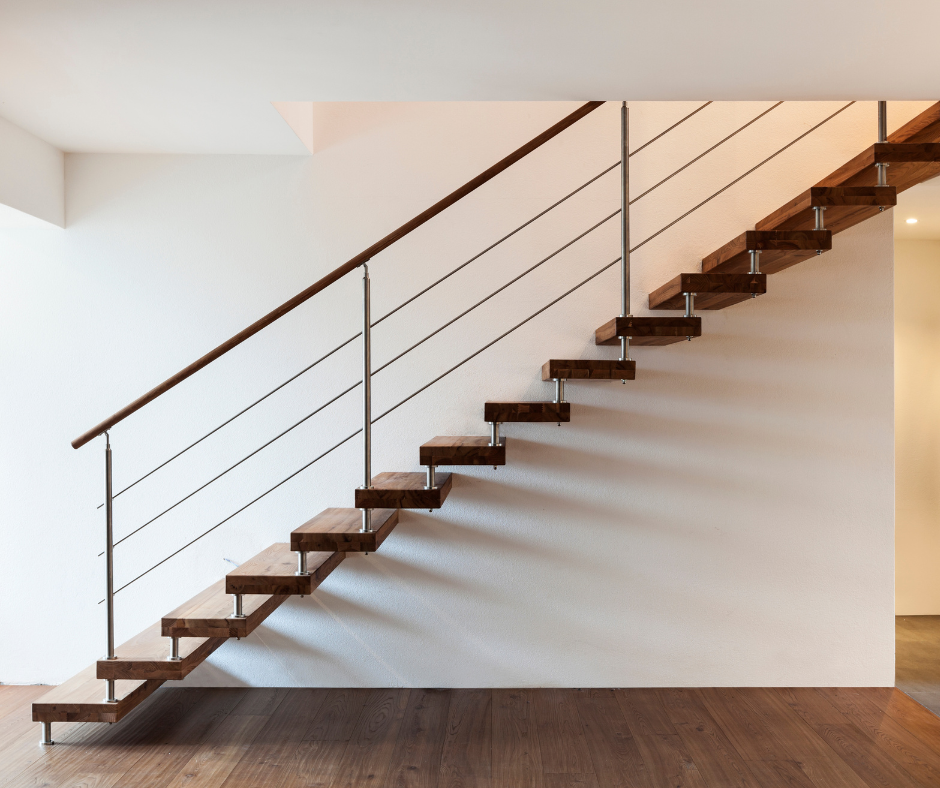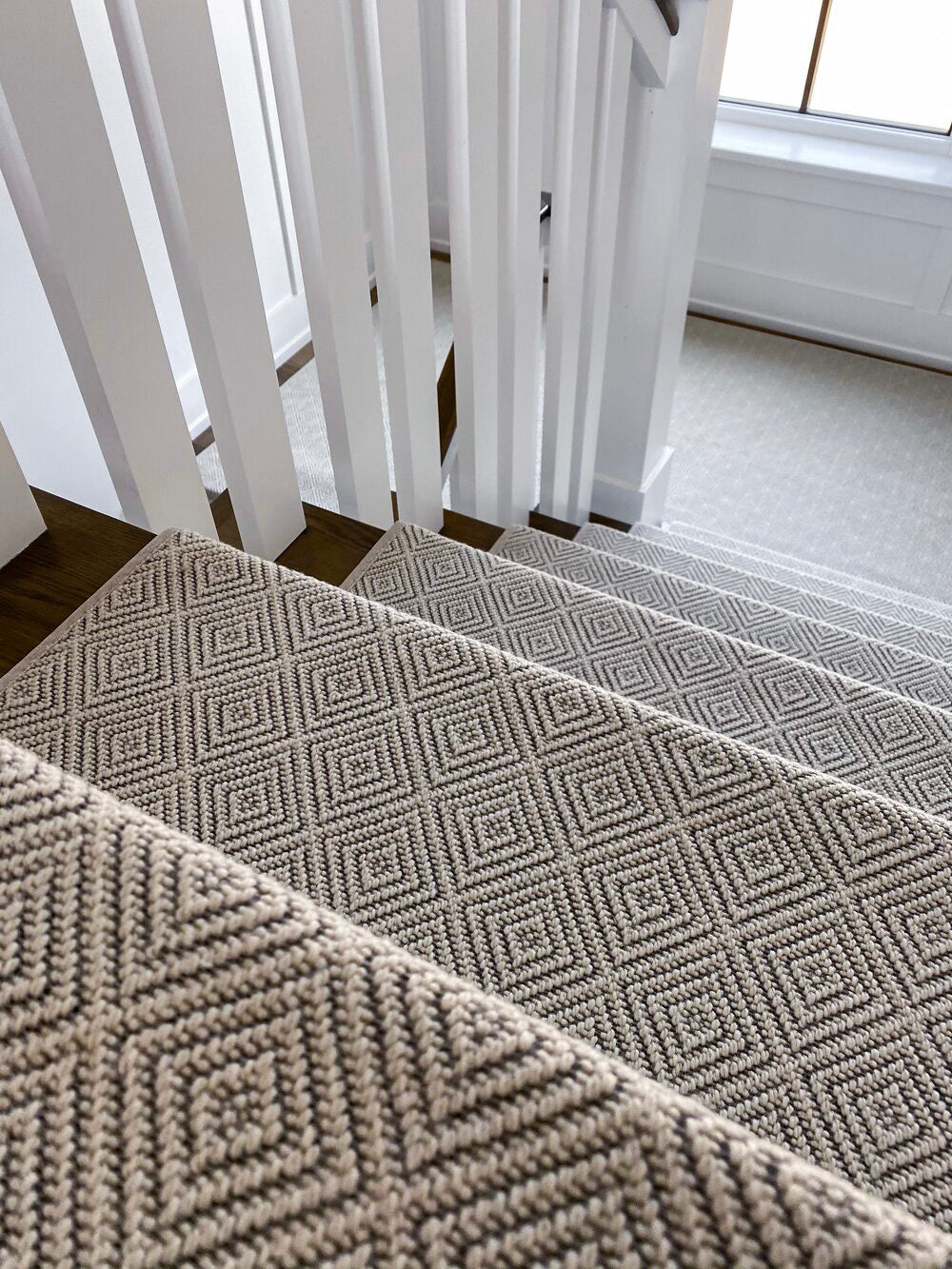Want to give your staircase a professional look—without hiring one?
Learning how to create a DIY stair tread return is a smart, budget-friendly way to transform an open staircase from raw to refined.
When paired with carpet stair treads, the result is not only beautiful but also safer for kids, pets, and daily life.
This guide will show you exactly how to measure, cut, and install stair tread returns, with tips for choosing materials, avoiding mistakes, and finishing strong.
What Is a Stair Tread Return?
Before you jump in, let’s cover the basics.
A stair tread return is a trim piece that finishes off the exposed side(s) of a stair tread.
You’ll typically see it used on open staircases, where one or both sides are visible and need a clean edge to match the front.
Adding a return gives your staircase a polished, built-in look—and protects the edges from wear or damage over time.
Why Learn How to Create a DIY Stair Tread Return?
Because it’s simpler than you think—and the results are worth it.
Many homeowners think custom stair upgrades require a professional.
But with a miter saw, a few supplies, and some guidance, you can absolutely create your own stair tread returns and install them with confidence.
Best of all, doing it yourself lets you personalize the project, save on labor, and get that “I did it!” feeling every time you walk upstairs.
Tools and Supplies You’ll Need
To get started, gather the following:
-
Tape measure
-
Pencil
-
Miter saw
-
Wood glue
-
Clamps
-
Sandpaper or a sanding block
-
Stain or paint to match your stairs
-
Safety glasses
-
Optional: touch-up putty or filler, nail gun (for added strength in high-traffic areas)
Tool note: The miter saw is the most essential. According to Fine Homebuilding Magazine, miter accuracy is what gives stair joints their professional finish.
How to Cut a Stair Tread Return
Precision is everything when it comes to cutting stair tread returns.
If your angles are clean, the end result will look custom and seamless.
Steps for Cutting:
-
Measure the Exposed Edge: This is the side of the stair tread that will get the return. Use a tape measure to get the exact length, down to the nearest 1/16 inch.
-
Mark a 45-Degree Angle on Both Pieces: Use a pencil to mark the cut line on both the tread and the return piece.
-
Cut Using a Miter Saw: Set your miter saw to 45 degrees and cut each piece carefully. Always support both ends of the board while cutting to avoid splintering.
-
Dry-Fit the Pieces: Place the return against the stair tread to make sure the angles align tightly. A perfect fit means less sanding and a better bond.
Installation Steps for a DIY Return
Once your cuts are complete, the next step is installing stair tread returns.
This part is about precision, alignment, and patience.
How to Install:
-
Apply Wood Glue: Spread a thin, even layer of glue on both cut surfaces.
-
Join the Pieces: Fit the return to the tread so the mitered edges line up tightly.
-
Clamp Securely: Use clamps to hold the joint firmly in place while the glue dries. Make sure the edges stay aligned.
-
Let Dry, Then Sand: Allow the glue to fully cure before sanding. Sand lightly to remove any roughness or visible seam.
-
Stain or Paint: Finish the return and tread so they match seamlessly. If you’re using carpet stair treads, install them once the finish is dry.
Common Questions About DIY Stair Tread Returns
Before you dive in, you might still be wondering if this project is right for you.
Here are a few quick answers to help you feel confident:
Do I Need a Return for Every Step?
Only if the side of the stair is exposed.
If it’s enclosed by a wall, you can skip the return.
Can I Use Wood Glue Only?
Yes. For most residential stairs, glue and clamps are enough.
In high-traffic homes, you can add finish nails for extra strength.
What’s the Best Wood to Use?
Use the same species of wood as your stair tread for the best match.
Oak, maple, and pine are popular choices.
What Is a No Return Stair Tread?
Now that you understand what a return is, let’s talk about when you don’t need one.
A no return stair tread is a stair tread without a finished edge.
It’s used in fully enclosed staircases, where the sides of the stairs are hidden by walls or trim.
Why Use No Return Treads?
-
Saves time and money
-
Ideal for traditional staircases
-
No visible edges means no need for a finished side
But if even one side of your staircase is open, a return gives it a more intentional and attractive look.
How to Choose the Right Finish and Accessories
The final touch to any stair project is what ties everything together.
Whether you’re staining your return to match existing wood or painting it for contrast, here’s what to keep in mind:
-
Test first. Always try your stain or paint on a scrap piece.
-
Match your style. Choose finishes that complement your flooring, railings, or wall color.
-
Add protection. Topcoat your finish to protect from daily wear and tear.
To complete the look and add function, install carpet stair treads once your returns are in place.
These treads protect your new woodwork, reduce noise, and improve traction—especially important for kids and pets.
Pro Tips to Avoid Common Mistakes
A stair project might seem intimidating at first, but these tips can help everything go smoothly:
-
Use sharp tools. Dull blades can splinter the wood.
-
Double-check measurements. One wrong cut can throw off alignment.
-
Clamp well. The tighter the fit during drying, the cleaner the final look.
-
Use wood filler sparingly. If you have a gap, fill and sand carefully before staining.
Custom Looks Made Easy
One of the best parts of learning how to create a DIY stair tread return is the flexibility it gives you.
You can:
-
Create a modern staircase with painted risers and stained treads.
-
Add rustic charm with dark finishes and rich textures.
-
Go clean and minimal with light wood and neutral treads.
It’s your home—your stairs should reflect your style.
Add Comfort with Carpet Stair Treads
Once your returns are installed and finished, take it one step further by adding comfort and safety.
Carpet stair treads are the perfect companion to wood stair upgrades. They:
-
Provide traction and reduce slips
-
Soften footsteps (and noise)
-
Protect your wood treads from daily wear
At Oak Valley Designs, we offer customizable carpet treads in a wide range of colors and styles—perfect for matching any finish or décor.
Steps to Success
Mastering how to create a DIY stair tread return is a game-changer for any homeowner.
It’s a project that’s:
-
Easier than it looks
-
Affordable and customizable
-
Packed with visual and practical benefits
Add in carpet stair treads, and your stairs become a focal point that’s as beautiful as it is safe.
Take pride in knowing you did it yourself—and enjoy the transformation every step of the way.
Ready to Start Your Project?
We’re here to help you make it happen.
From carpet swatches and installation tips to full DIY kits, Oak Valley Designs has everything you need to finish your staircase right.
-
Website: https://oakvalleydesigns.com/
-
Phone: 706.331.0315
-
Email: info@oakvalleydesigns.com
-
Address: 30 River Ct SW Bldg E Cartersville, Ga 30120




